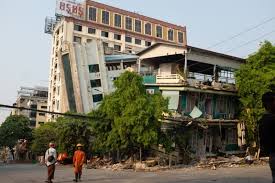Italy: Rome’s chocolate centre
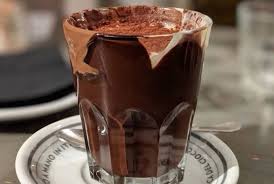
Rome: The history of chocolate goes back millennia, but its popularity at Easter is much more recent. Chocolates place in European history and in the hearts of sweet tooths and chocoholics worldwide can be traced back to the New World.
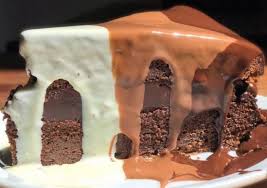
The Spanish explorer Hernn Corts is credited with discovering chocolate as it was consumed by the Mayas in what is now Mexico, and with bringing it back to Spain in 1528. There, the pure chocolate was mixed with other ingredients including cinnamon, nutmeg, vanilla, almonds and sugar to create a more palatable drink (it was originally consumed in liquid form).
Its popularity spread throughout western Europe, and in 1569 it arrived in Rome, where Pope Pius V declared it repulsive, but that drinking it on Fridays during Lent did not break the fast.
It wasn’t until almost a century later that chocolate became a fashionable drink throughout the continent, and in 1662 the Roman Catholic Church restated that the liquid didn’t break the fast, but that chocolate confections a new phenomenon could not be consumed until Easter.
The emergence of chocolate Easter candy is more elusive. We know that Easter was originally a pagan celebration of spring, which was subsequently incorporated into the Christian calendar by missionaries as their celebration of the resurrection of Christ.
The rabbit existed as a symbol of fertility and new life since pre-Christian times too, although it was Germany that first celebrated Easter with edible bunnies made of pastry and sugar in the early 1800s. When chocolate became the medium for Easter sweets is difficult to pinpoint, but it must have been some time in the 19th century, when fondant chocolate was first developed, and when candies were first mass-produced and affordable to the general public.
In Italy today the main secular symbol of Easter is the egg also a symbol of new life, rebirth and hope. And as tradition states, spring is a great time to celebrate life with a substance that has historically been considered an ancient currency, an upper-class beverage and an aphrodisiac.
Luckily for Rome residents and visitors, there are a handful of artisans in the historic centre that specialise in making chocolates, all of whom feature special designs for the Easter holiday.
Moriondo & Gariglio: This chocolate shop near the Pantheon is the oldest in Rome. The company was founded in 1850 in Turin (one of Italys chocolate meccas) as confectioners to the royal Savoy family, and moved to Rome about 1870. Not much has changed since then. Theyre still using the same recipes and pure chocolate in their candies, and their chocolates flavoured with fruit (try the banana) and nuts (the famed nocciola) hark back to a time before preservatives. For Easter, Moriondo & Gariglio offers eggs wrapped in brightly-coloured foil with gifts inside for children, and filled simply with chocolate for “adult” baskets, which make lovely centrepieces for a holiday table.
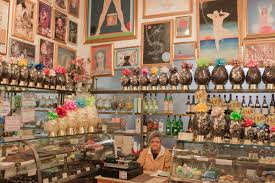
Valzani: This chocolate and confections shop has been in Trastevere since 1925, and is famous for its chocolate Easter eggs of all sizes. Theres even a poem, written in dialect for the store owners after world war two, that speaks of these eggs: “belli, boni e co poca spesa / ca mette puro la sopresa” (pretty, delicious and inexpensive / they even have a surprise inside). Eggs range from the tiny and solid to life-size and larger ones with gifts inside, at a cost of 5.80 to 43.50. Theres even a huge egg of chocolate and painted marzipan that weighs in at about 35 kg, picturing i dolci romani a couple embracing while watching a Roman sunset. Valzani is the locale for chocolate Easter eggs served up with a bit of local history.
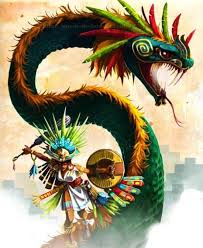
Quetzalcoatl: Named after the feathered Aztec god who supposedly descended from heaven carrying a cocoa tree from paradise, this boutique is owned by a French woman and her Italian husband with an unwavering love of fine chocolates. Using only high-quality Valrhona chocolate from France, this emporium offers everything from pralines to truffles and macaroons, all home-made and served with an expiry date card to ensure freshness. Here one finds chocolates filled with ganache, flavoured with limoncello liqueur, fig grappa, chilli pepper, lavender, tea, cinnamon and basil, to name a few varieties. For Easter, Quetzalcoatl offers a range of moulded chocolate treats, from small and large eggs (about 84 for a very large one) to bells, doves, ducks, bunnies, fish, lambs and chicks. Each is set neatly in Easter “grass” and packaged simply with a brightly-coloured ribbon perfect for gift giving.
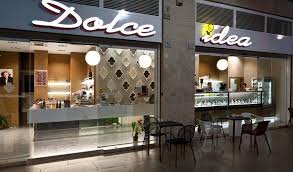
Dolce Idea: The newest addition to the Roman chocolate scene has Neapolitan roots. Started in 1979 by Gennaro Bottone, this outlet in Trastevere is the fourth franchise, and the first shop outside Naples. Everything is of high-quality chocolate and the selection is vast, featuring 60 different pralines, as well as chocolate “sculpture”: a chocolate vista of the Bay of Naples and a dark chocolate espresso pot for example. For Easter, Dolce Idea features the usual bunnies, lambs, chicks and eggs, here given a new twist with the optional addition of puffed rice or gianduia.





